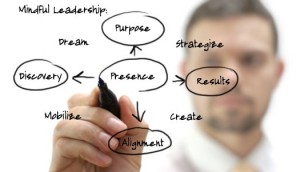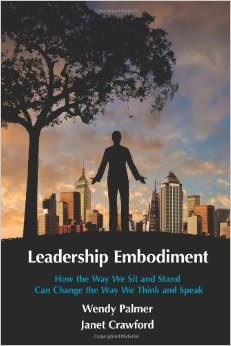 In a discussion group that I belong to the question was raised whether mindfulness can be measured in actual behavior and whether a mindful leader is a more effective one.
In a discussion group that I belong to the question was raised whether mindfulness can be measured in actual behavior and whether a mindful leader is a more effective one.
Excellent questions. While I don’t enter into discussions with lengthy comments, I felt compelled to do so this time. And not because I live in the San Francisco Bay Area, considered by many to be a “woo woo” geographical bubble, but rather because in working with leaders in corporations, foundations and non-profits, I have seen the expression of mindfulness in action.
Mindful leaders begin with a sense of purpose rather than a list of objectives. The create objectives that align with the purpose and they get their teams to align around and preserve the purpose as they build and work.
They learn to be open to discovery – its part of what shows up in any mindfulness practice, the unconscious made conscious with rejecting anything unpleasant. Discovery drives the development – of people and products and themselves. So what about personal relationships on the job?
Here’s what I said: Mindful leaders never “lose” it – meaning they are self-aware, know their triggers and move into responsiveness, rather than reactivity. And that makes them more effective as their relationships work. Also, they bring compassion – for themselves and for others – not some weak tea version, but true compassion which isn’t about “liking” but more about deep understanding and acceptance of our very human selves. If that doesn’t have a place in the boardroom, what are we doing there?
And through their mindful state, they stay curious and open, so they can consider ideas vastly different from than their own without sticky attachment. Imagine! Openness! .This also makes them more effective. And both of these ways of being ( rather than limited behaviors) are observable over time.
Mindfulness allows for a deep connection to intuition (a way of processing much more input and synthesizing it) so these leaders are decisive when the need arises to be so – once the fire is raging – again using their executive function appropriately. And they know when its appropriate delegate.
Since mindfulness integrates the head, heart and body centers, they are more comfortable in their skins, on their teams, leading their organizations, despite their personality styles – since the integration transcends personality proclivities. When someone is comfortable, they invite more comfort from others. This opens the portals to creativity – much needed in our organizations.
Also, mindfulness accounts for flexibility, since by its nature it speaks to the dynamism of life. Mindful leaders can change course effectively when necessary.
They see failure as an opportunity to learn, to grow as a feedback loop – not a personal or team shame which closes down the creative channels. What good ever comes of shame anyway? Without it, they come back quickly.
Mindful leaders are also quite aware that much suffering comes from wanting things to be different than they are – including people – so they can accept people with less criticism, model this for their teams, and deal with situations more fluidly – not wasting time on “what should be” – making them more effective.
The list goes on…and the point is that Mindfulness, while not a template of specific behaviors, is a more like an orientation that results in a far more effective way of leading which others observe, emulate and which create a company culture AND finally produce profitability.
These days, powerful executive coaching must include mindfulness training to assure that leaders are effective, creative, strategic and approachable. And keeps the learning, a lifelong activity that inspires and motivates others.





